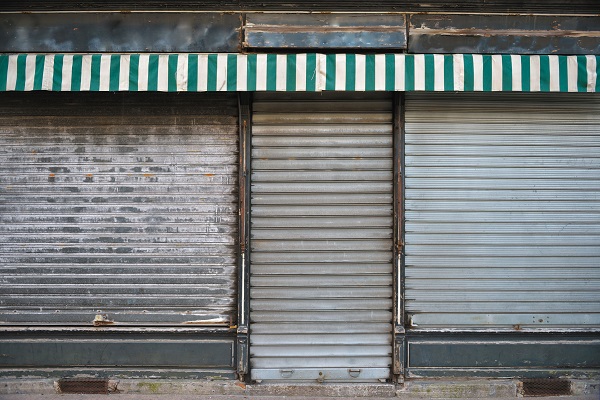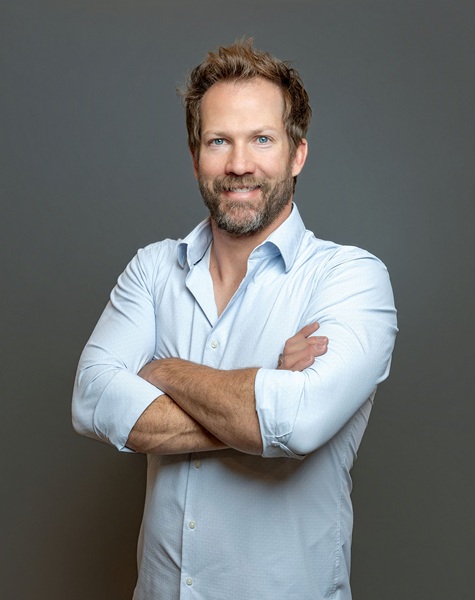How Changing Use and Vacant Buildings Create Lessors Risk Only Coverage Gaps

By: Will Jones
The adoption of work-from-home policies and shifting consumer preference to e-commerce are affecting the way commercial buildings are used, which is creating problems for building owners who lease commercial real estate and need lessors risk only (LRO) insurance.
Nearly two years into the COVID-19 pandemic, roughly 6 in 10 U.S. workers who say their jobs can mainly be done from home are working from home all or most of the time, according to a recent Pew Research Center survey. This marks a decline from October 2020, when 71% of those with jobs that could be done from home were working from home all or most of the time, the Pew Research Center says, but it’s still much higher than the 23% who say they teleworked frequently before the coronavirus outbreak.
Meanwhile, brick-and-mortar stores have been slowly going out of fashion, leading to what has become known as the “retail apocalypse.” Ravaged by a pandemic that shuttered stores for weeks in the spring and summer—which drove even more consumer spending online—retailers big and small closed 12,200 stores in the U.S. last year, according to commercial real estate firm CoStar Group, which notes that the closures amounted to 159 million square feet of retail space.
While the pandemic herded the American consumer into their homes and led to an even larger reliance on e-commerce, in-person retail was already under threat. In 2019, retailers announced more than 9,300 store closures, a 63% increase from 2018, when more than 5,700 stores closed, according to Coresight Research, which also note that more than 8,000 stores shuttered in 2017.
“Early in the pandemic, some big retailers like Walmart, Costco, and Target, as well as drugstore chains CVS and Walgreens, were deemed essential by authorities and allowed to stay open, giving them an edge over the likes of Macy’s, Kohl’s, Nordstrom, and Abercrombie & Fitch,” reported Fortune last year.
All this is giving commercial real estate owners a lot to think about concerning their LRO policy.
LRO covers a wide range of risks resulting in property damage or bodily injury that might arise on a leased property. Commonly covered losses include slip-and-fall injuries, damage to the property from weather-related perils, vandalism, fire, water damage, auto accidents at the property and theft. Coverages can also be extended to cover loss to rents, which applies when there is a covered cause of loss that causes the tenants to have to move to another location.
Depending on the insurer, underwriting requirements and rating for LRO policies are based on what the building is being used for and square footage. Traditionally, LRO is a good line of business and a happy hunting ground for agents. Low loss ratios and an abundance of prospects mean agents do not need to look much further than Main Street, the nearest mall or business park for new leads.
“The opportunity for insurance agents working in the lessor’s risk marketplace is extensive and full of premium and profit sharing potential,” according to “Lessor’s Risk Insurance Accounts: An Agent’s Guide to Reaching More Clients,” published by Pekin Insurance in 2016, which notes that “lessor’s risk clients can be found in virtually every community.”
Despite the challenges of the post-COVID-19 economy, commercial building owners are still a client persona that many agents go after, says Joshua Lipstone, vice president, ISU-Lipstone Insurance Group in Cary, North Carolina. Lipstone notes that ideal clients in this space are companies that specialize in purchasing properties, which in the past few years was being driven by an abundance of capital and low-interest rates.
“It was more prevalent in the apartment space, but it’s becoming a little bit more prevalent in commercial buildings,” Lipstone says. “We have some clients where we specifically go after them because we know that’s their business. Depending on the business and location, there is also a cross-selling opportunity for flood, earthquake and directors & officers.”
“We create marketing campaigns, such as emails and articles, to let them know that if they’re not speaking with their agent there may be gaps in coverage,” he says. “We go for education and make sure that they’re aware that you can’t just write the policy and not review it.”
Pretty Vacant
In today’s environment, commercial building owners’ LRO needs are complex, existing in a limbo between occupied, partly occupied and vacant, which means it is vital that agents remain in regular contact with their lessor insured, especially when a building becomes vacant.
The vacancy provision in the ISO Building and Personal Property form – CP 00 10 includes the following language:
If the building where loss or damage occurs has been vacant for more than 60 consecutive days before that loss or damage occurs:
(1) We will not pay for any loss or damage caused by any of the following, even if they are Covered Causes of Loss:
(a) Vandalism;
(b) Sprinkler leakage, unless you have protected the system against freezing;
(c) Building glass breakage;
(d) Water damage;
(e) Theft; or
(f) Attempted theft.
(2) With respect to Covered Causes of Loss other than those listed in b.(1)(a) through b.(1)(f) above, we will reduce the amount we would otherwise pay for the loss or damage by 15%.
Further, the ISO form defines “vacant” as:
(1) As used in this Vacancy Condition, the term building and the term vacant have the meanings set forth in (1)(a) and (1)(b) below:
(a) When this policy is issued to a tenant, and with respect to that tenant’s interest in Covered Property, building means the unit or suite rented or leased to the tenant. Such building is vacant when it does not contain enough business personal property to conduct customary operations.
(b) When this policy is issued to the owner or general lessee of a building, building means the entire building. Such building is vacant unless at least 31% of its total square footage is:
(i) Rented to a lessee or sublessee and used by the lessee or sublessee to conduct its customary operations; and/or
(ii) Used by the building owner to conduct customary operations.
During the pandemic, the vacancy provision created issues for businesses. Amid business closures—some optional, some forced—a summer of social upheaval resulted in protests and rioting that caused property damage to businesses that had been closed for more than 60 days, illustrating the need for communication between agents and lessors.
“Vacant buildings are undesirable for multiple reasons, including, but not limited to, water damage from burst sprinkler piping, water damage from a leaking roof, vandalism from thieves stealing plumbing and HVAC equipment, and finally an uncontrolled fire,” says Josh Ramshaw, commercial lines consulting underwriter, Westfield. “These exposures may go unchecked for some period of time before being discovered, increasing the damage caused by the peril.”
“The better the agent knows their insured’s attitude toward risk management, the better the agent can serve their client’s needs,” he says. “Information is paramount to underwriting and the more that can be obtained and relayed to the underwriter, the better the underwriter understands the risk and can result in more favorable results.”
Of course, agents play a key role in assisting lessors with risk management surrounding a property that is either occupied, vacant—or teetering somewhere on the precipice between the two. However, vacant policies are non-standard, which means reviewing them and matching them to the needs of the clients is imperative.
“Vacant policies can be restrictive—some forms may be actual cash value, not replacement value, for example,” says John Dustin, president of J.E.D. Insurance & Financial Service Agency in Foxborough, Massachusetts, and a Strategic Insurance Agency Alliance member.
“Or they may only give you named perils not special form—you’ve really got to study what you’re getting back,” he continues. “Some vacant policies contain different provisions or exclusions that you’re not used to seeing on a standard policy, so you have to run down those lists to make sure that what you’re buying is what your client needs.”
Ideally, lessors and their agents aren’t going to have a long-term relationship with the vacant building insurer because the lessor—hopefully—will find a new tenant or the tenant will reoccupy the property.
“But those non-domestic carriers and syndicates are possibly harder to deal with from a claim perspective,” Dustin says. “However, the biggest thing with a vacant policy is making sure the company that you’re placing it with is financially stable. You don’t want to place a policy with one company because it’s cheap and later find out they’ve gone insolvent.”
Similarly, the protective safeguard endorsements on vacant policies are very specific and vary by policy—and can cause a claim to be denied. Common safeguards include turning off the water, having burglar alarms, employing a security company to regularly check the building and ensuring that the lights are turned on.
Straight to Market
While vacant building policies and LRO policies might differ in coverages, one thing they have in common is that “there’s a high-intent buyer,” says Alex Bargmann, CEO of Pathpoint. “With vacant buildings there might be a lender coming in and saying they need coverage … or, for LRO, maybe the agent tried admitted markets first but something about the occupancy is sending it to the excess & surplus market.”
“Either way, there’s always that crunch to get it done quickly,” Bargmann says. “This is where an agent’s understanding of the client and their book of business, as well as the market, can really differentiate their services because speed and efficiency matter.”
Across insurance, the overarching trend is that clients expect faster interactions, even for the most difficult to place risks. However, with the right partner, agents can minimize turnaround time and delight their clients. “Being able to effectively see that risk and then knowing where to go for it, that’s the magic,” Bargmann adds.
Big “I” members have exclusive access to Big “I” Markets, an online market access platform that connects agents with national carriers for several products including commercial LRO. “Big ‘I’ members nationwide may quote lessors risk for both vacant and occupied buildings, subject to underwriting eligibility and guidelines,” says Claire McCormack, supervisor and senior underwriter, commercial lines, Big “I” Markets.
“Agents can receive quotes very quickly once the account information is submitted and Big ‘I’ Markets’ dedicated staff is available to support the agent through the entire underwriting and sales process,” she adds.
Lessor the Devil You Know
As business models have reacted to accommodate adapting consumer preferences, lessors are faced with challenges connected to insuring their properties amid the ensuing changes in the use of rented spaces.
“These landlords are scrambling to find replacement tenants and probably trying to decide whether they should become a mixed-use building,” Dustin says. And while the search for replacements has resulted in some landlords tapping doctors and daycares to fill their rental space, as The New York Times recently reported, others have allowed some fairly unconventional businesses to set up shop in commercial real estate properties. Last year, Crunchbase reported that empty office spaces in U.S. cities are being repurposed into “micro-gyms” that can be rented by the hour, food distribution centers, storage spaces, classrooms for microschools and learning pods, and co-working spaces.
For agents, “a lot of it is intuitive underwriting,” Dustin says, who impresses that “you need to communicate with your underwriter. Whether the tenant is only going to be in the office or there’s a complete shift in occupancy, you’ve got to let the carrier know that and ask if they are OK with it.”
“It all goes back to what the insurance company allows the space to be used for,” Lipstone agrees. “If it’s a clothing store and it is then changed into a doctor’s office or an optometrist—and if the insurance company is willing to insure that type of business—when it comes to the LRO policy they probably don’t have an issue with it.”
“In that example, you’ll have to update the policy to reflect the change in tenant because it’s no longer a clothing store, but this would be where you run into the issues when it’s a higher exposure business,” he adds.
Additionally, a shortage of residential housing is leading to more mixed-use buildings. And as the economy continues to rebound from the pandemic, these types of developments are becoming more and more commonplace and heralded as an efficient and lucrative model for lessors moving forward.
“If you’re a single-use facility, you’re not going to be able to compete because you only got one type of offering,” J.F. Finn, principal at architecture firm Gensler, told Retail Brew in April. “Flexibility and multiple uses are why mixed-use has become such a driver for everybody—because it has the ability to create the synergy and creative value around it.”
This evolution means that retail isn’t completely dead and suggests that e-commerce and direct-to-consumer models cannot thrive without at least some brick-and-mortar retail space. The insurance requirements for lessors of mixed-use buildings depend largely on the fire protection class, class codes and more.
However, because these risks are more complex, agents can be easily bogged down in “a quagmire of paperwork,” Bargmann says. “But being able to solve that problem for clients is a great opportunity,” he adds. “If an agent is thinking about how to differentiate themselves, they should think about the turnaround time on these types of accounts.”
The pandemic brought about a lot of change. The Great Resignation, the Great Retirement, COVID-Clarity and more have affected businesses in a multitude of ways. However, businesses are still waiting to see the result of the Great Reset—how life and work are permanently changed in light of the pandemic.
For lessors, remote and hybrid work culture could create a conundrum in relation to the vacancy provision. While 31% occupancy snugly fits into the Monday to Friday 9 to 5 world, a question lurks on the horizon: How does the vacancy provision relate to offices where some workers are going to the office every day while others are commuting only a handful of times per month? How many hybrid workers would mean an office is considered vacant? Will there be a change to protected safeguards?
“Customary operations and occupied mean different things now,” Dustin says. “So, I’m waiting to see how the industry responds to the hybrid environment.”
Will Jones is IA editor-in-chief.
Growing ConcernsWhen the pandemic first hit and large swaths of the economy began working from home, there wasn’t an immediate impact in the environmental insurance marketplace. However, in many instances, pollution liability exposures did increase, primarily in properties that did not have proper HVAC system maintenance in place, leaving them susceptible to mold, legionella and overall poor indoor air quality. “What we see, specifically with schools and school districts, is when the school year ends, they’ll shut down or significantly reduce their HVAC systems,” explains John Heft, executive vice president of operations, RT Specialty. “Well, what happens? If you don’t have air conditioning in the summer, humidity builds, and you typically get mold growth.” “Legionella bacteria can also grow in the HVAC drip pans,” Heft says. “With some buildings becoming occupied again, some of those exposures are coming back.” A year and a half later, many buildings have either reopened or are partially open. “In buildings that did not maintain the building correctly, these public health dangers could be behind the walls or above ceiling tiles,” Heft continues. “You just don’t know, but there’s the possibility for adverse indoor air quality.” Most pollution liability policies do not contain a vacancy exclusion. However, one thing they nearly always include is a material change in use provision and most, if not all, exclude communicable disease or COVID-19-related losses. “We have pollution policies for commercial real estate, habitational real estate and hospitality portfolios, but have not seen claims denied because of the building being vacant,” Heft says. “What we have seen are claim denials related to loss of rental income or business interruption due to COVID-19.” For buildings that remain vacant or will become vacant, there are several recommendations that agents can make to their lessors risk clients. Most importantly, Heft advises to “regulate the indoor environment and maintain mechanical systems within the building, including the HVAC system to make sure that the humidity does exceed recommended standards.” Also, “make sure that the filters are changed, the drip pans are clear and there isn’t any buildup of water from cooling towers which could lead to mold and Legionella growth.” he adds. “From an overall insurability perspective, its beneficial to make sure that the systems are maintained. If they’re not, your insured could run into coverage issues, not only with their environmental coverages but their property coverages and possibly other coverages as well.”—WJ |











